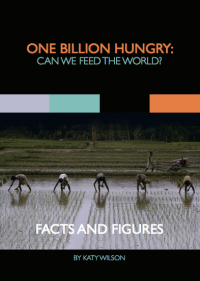This article was originally published on The Conversation. Read the original article.
By Gordon Conway, Imperial College London

The key to Rwanda’s agricultural success is good partnership between nongovernmental organisations, the private sector and the government. Sam Thompson/DFID Rwanda
On my most recent visit to Rwanda, it was evident that farmers there are beginning to do well. I have visited the country on a number of occasions over the past ten years, and each time I am impressed to see significant improvements in the lives of ordinary people. With average annual agricultural growth rates reaching 5.7% between 2001 and 2012, and average annual gross domestic product growth of 7%-8% since 2000, the signs are looking good.
Farmland covers three quarters of all land in Rwanda, amounting to about 18,425 km². Of the agricultural land, half of landholdings are less than half a hectare in size, and two-thirds of all food produced is for household consumption. This indicates that the agricultural sector remains largely subsistence in nature, despite the fact that these small farms are becoming increasingly commercial. Rwanda is famous for its coffee and tea, which combined account for about 70% of agricultural export earnings.
Rwanda certainly lives up to the tagline “the land of a thousand hills”, with stunning mountain scenery at every turn. This is beautiful for the visitor, but it presents real challenges to farmers, who typically have a farm plot that is just 0.6 hectares in size. Plots also tend to spread over several locations, resulting in many households farming as little as 0.4 hectares.
A thousand hills
The flatter land is often used to grow crops to sell at local markets. The steeper slopes, which are more difficult to farm, are used to grow food for household consumption. But as the population swells, additional pressure is loaded onto scarcer land. This encourages people to move on to even steeper slopes, where farming is physically more demanding and the shallower soils are more prone to erosion and landslides. [Read more…]




 Malnutrition, in its various forms, is thought to affect over 2 billion people in the world
Malnutrition, in its various forms, is thought to affect over 2 billion people in the world











